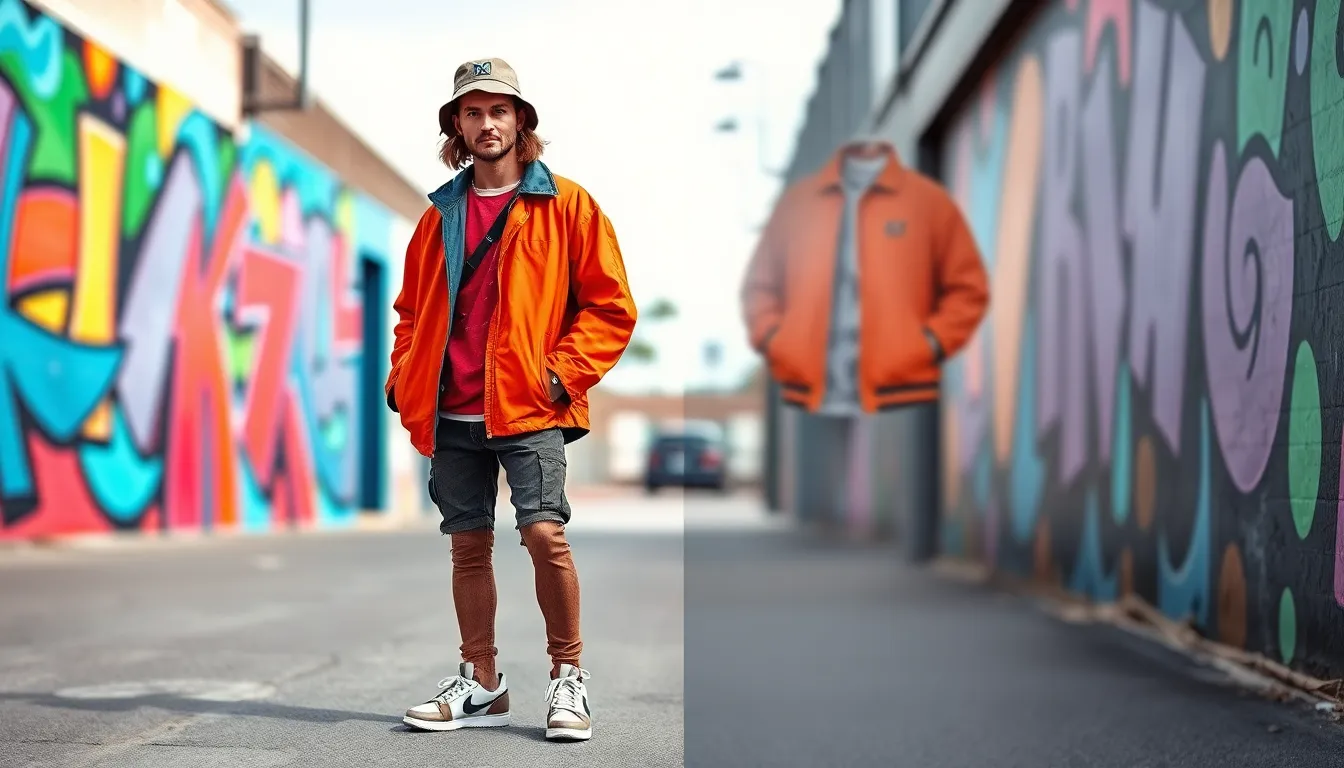Fashion isn’t just about clothes; it’s a powerful form of self-expression that can transform a mundane day into a runway-worthy experience. Whether you’re strutting down the street or lounging at home in your favorite sweatpants, the right outfit can elevate your mood and boost your confidence. Who knew that a well-placed belt or a pair of killer shoes could make someone feel like they just walked out of a magazine?
Table of Contents
ToggleThe Evolution Of Fashion
Fashion has undergone significant transformation throughout history, shaped by various historical and cultural events. Each era reflects distinct styles that resonate with societal changes and artistic movements.
Historical Influences
Fashion trends often emerge as responses to historical events. The Industrial Revolution, for instance, introduced mass production, making clothing more accessible. Each era, like the Roaring Twenties, brought new styles such as flapper dresses and men’s suits, reflecting the spirit of the time. In the 1960s, counterculture movements influenced fashion, promoting bold patterns and colors. Iconic figures like Coco Chanel also played pivotal roles, innovating women’s fashion by introducing more functional and liberated designs. Historical context, therefore, remains essential in understanding fashion’s evolution.
Cultural Impact
Culture significantly shapes fashion trends across the globe. Various regions contribute unique fabrics and styles, creating a rich tapestry of influence. For example, traditional Japanese kimonos showcase intricate designs and craftsmanship. Modern streetwear blends urban culture with high fashion, illustrating the fusion of different societal elements. Events such as Fashion Weeks highlight cultural diversity by presenting designers from various backgrounds. Fashion serves as a medium to express cultural identity, facilitating dialogue among communities and promoting inclusivity. Such dynamics underline the ongoing relationship between culture and fashion evolution.
Current Fashion Trends

Fashion trends reflect ongoing shifts in style and preferences. Various movements emphasize individuality and sustainability, transforming how people approach their wardrobes.
Street Style
Street style captures the essence of urban culture. It blends comfort and flair, featuring oversized silhouettes, vibrant colors, and unique accessories. Influences from social media push trends like bucket hats and statement sneakers into mainstream fashion. Many see it as a canvas for personal expression, with layering techniques that combine different textures and patterns. Designers respond to these trends, creating pieces that resonate with younger audiences. The spontaneity and creativity of street style highlight its importance in contemporary fashion.
Sustainable Fashion
Sustainable fashion prioritizes environmentally friendly practices. This movement encourages consumers to consider the ecological impacts of their clothing choices. Brands increasingly adopt eco-friendly materials and ethical production methods. Recycling and upcycling fashion items gains traction, promoting a circular economy. Many designers advocate for transparency, ensuring customers know the origins of their garments. By embracing sustainable practices, the fashion industry addresses pressing environmental concerns. This trend reflects a significant shift in consumer values toward social and environmental responsibility.
Fashion Icons And Influencers
Fashion icons and influencers play crucial roles in shaping trends and styles within the industry. Their impact extends beyond clothing, influencing culture and societal norms.
Key Figures In Modern Fashion
Key figures continually redefine modern fashion. Designers like Alexander McQueen and Karl Lagerfeld innovate through bold techniques and visionary concepts. Additionally, personalities such as Rihanna and Beyoncé transform the scene with their unique styles, blending high-fashion with streetwear. Influential models like Naomi Campbell and Gigi Hadid elevate trends by showcasing versatility in various looks. Each figure’s distinct approach not only inspires fans but also invites discussion around representation and diversity in fashion. Emerging voices, such as Virgil Abloh and Jacquemus, contribute fresh perspectives, emphasizing inclusivity through their collections.
The Role Of Social Media
Social media acts as a powerful platform for fashion influencers. Instagram and TikTok enable rapid sharing of styles and ideas, transforming how trends spread. Influencers like Chiara Ferragni and Aimee Song reach vast audiences through curated content and authentic engagement. These platforms promote direct communication between influencers and fans, fostering a sense of community. Trends often emerge organically from user-generated content, with challenges and hashtags amplifying visibility. Furthermore, collaborations between brands and social media influencers drive innovation and reflect consumer preferences. By harnessing these digital channels, fashion influencers shape public perception and redefine fashion narratives.
The Future Of Fashion
Fashion continues to evolve, influenced by new technologies and emerging trends.
Technological Innovations
Wearable technology is shaping the future of fashion significantly. Smart clothing incorporates sensors that track health metrics, merging style and functionality. Augmented reality applications allow consumers to virtually try on outfits, enhancing the shopping experience. Additionally, 3D printing is revolutionizing production, enabling designers to create customized pieces efficiently. Sustainability finds support through innovations like biodegradable fabrics, promoting eco-friendly practices. Photonic fabrics, equipped with light-responsive features, add another layer of versatility, allowing garments to change colors. As technology integrates further, personalization becomes a notable trend, reflecting individual preferences and lifestyles.
Predictions For Upcoming Trends
Sustainability will dominate upcoming fashion trends. Increased emphasis on circular fashion incorporates recycling and secondhand markets, shifting consumer attitudes toward responsible choices. Minimalist designs are expected to flourish, with a focus on timeless pieces that prioritize quality over quantity. Inclusivity will also gain momentum, highlighting diverse body types and gender-fluid styles within mainstream collections. Collaboration between brands and artists continues to blur traditional boundaries, merging creativity with commercial appeal. Vintage aesthetics are expected to resurface, drawing inspiration from past decades while placing a modern twist on classic designs. Ultimately, these trends reflect a collective shift towards a more thoughtful, diverse, and responsible fashion landscape.
Fashion is more than just clothing; it’s a powerful form of self-expression that shapes identities and cultures. As trends evolve and technology advances, the industry continues to embrace sustainability and inclusivity. The influence of fashion icons and social media has transformed the way styles are shared and celebrated.
Looking ahead, the future promises innovative designs that prioritize environmental responsibility while maintaining personal expression. This ongoing evolution reflects a collective desire for a more thoughtful and diverse fashion landscape. By embracing these changes, individuals can not only enhance their style but also contribute to a more sustainable and inclusive world.
